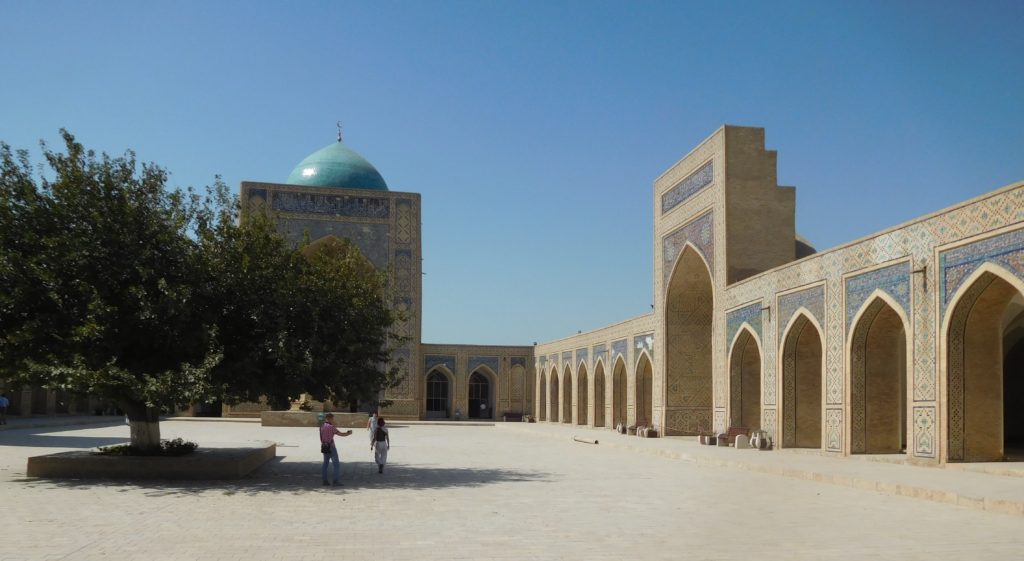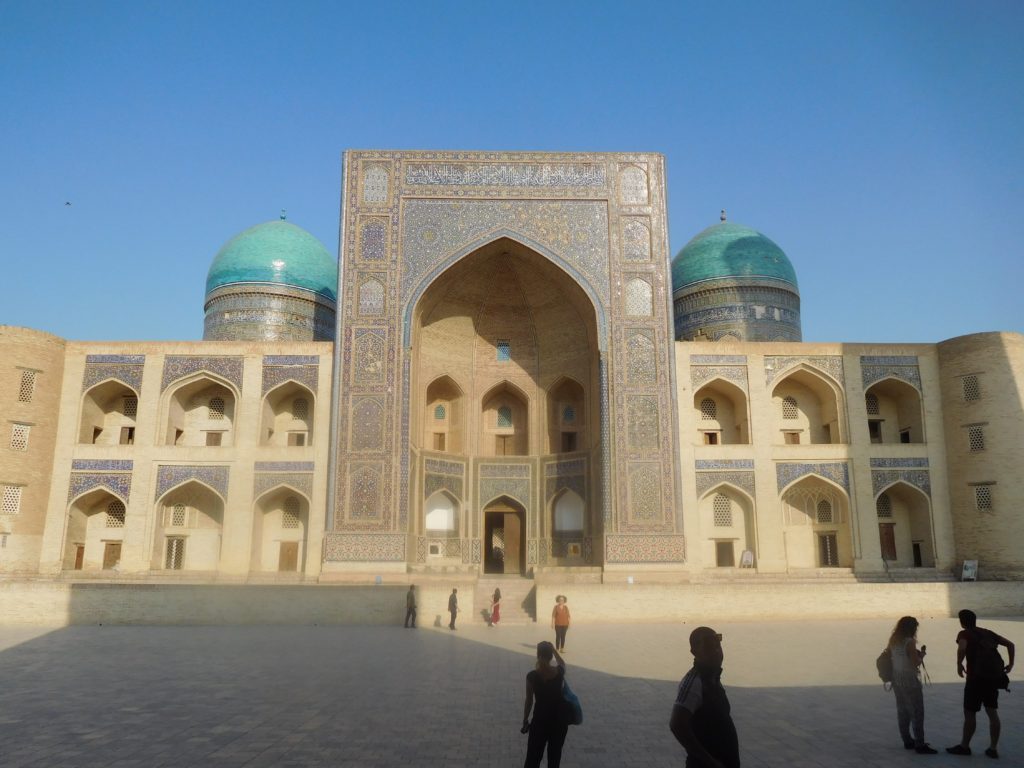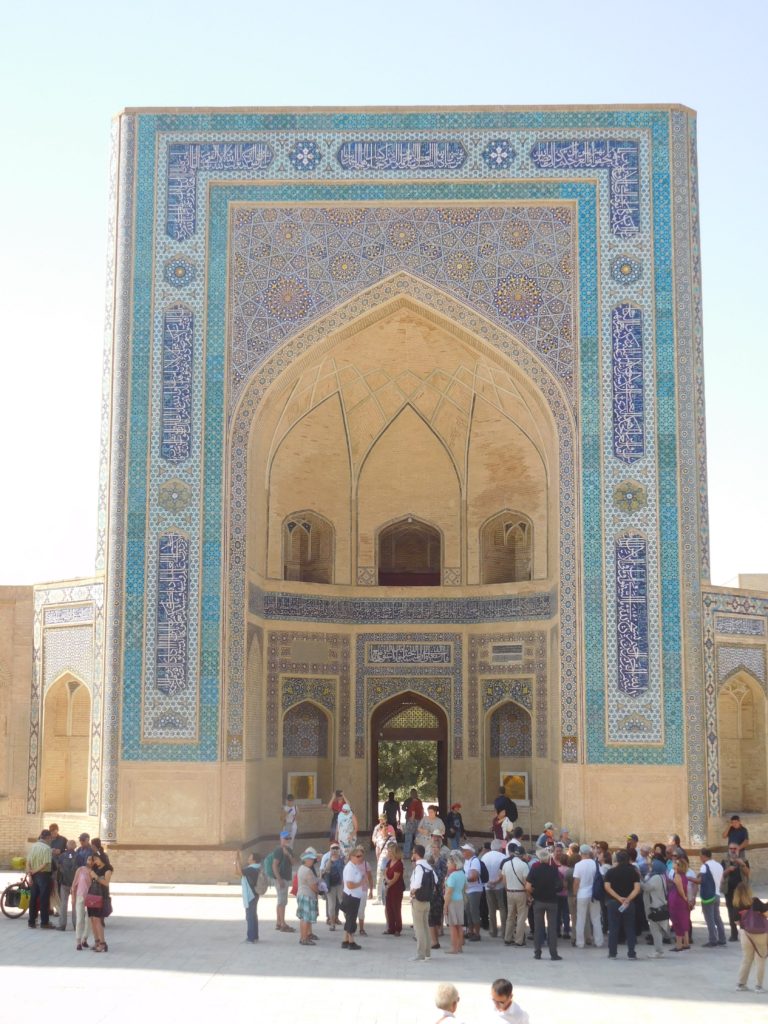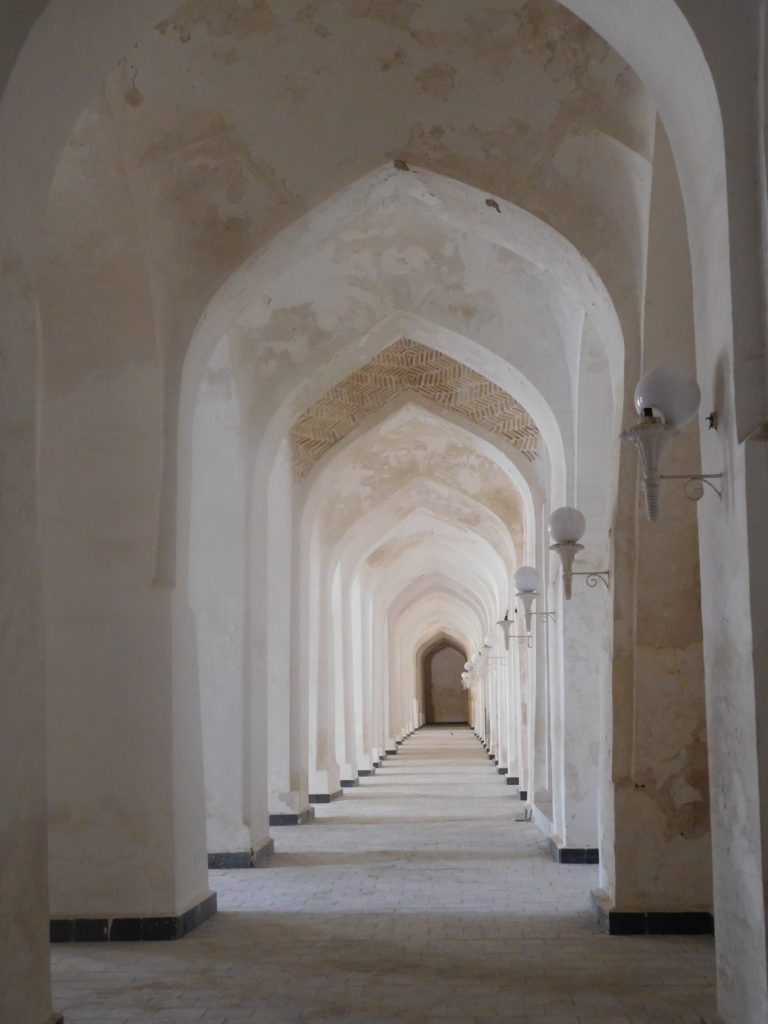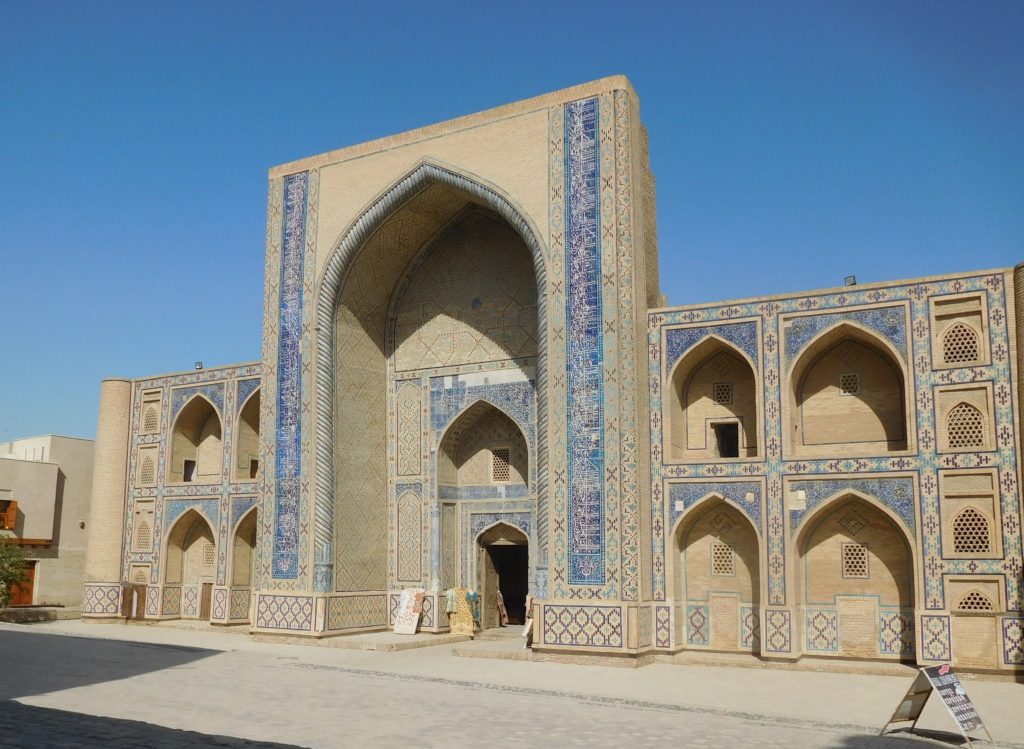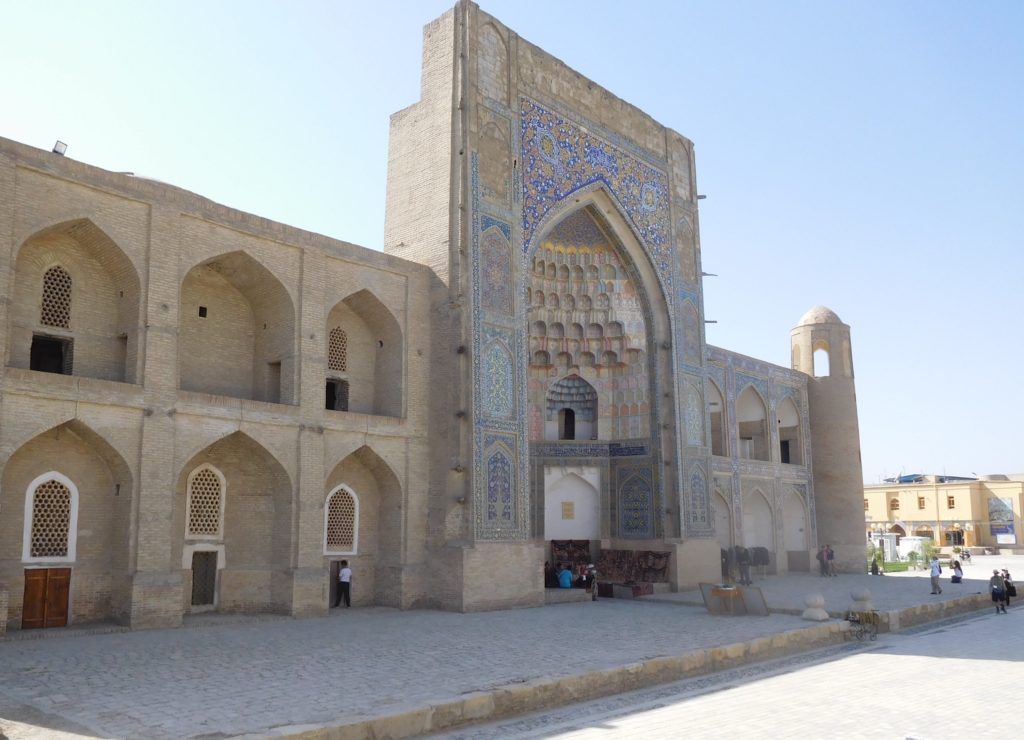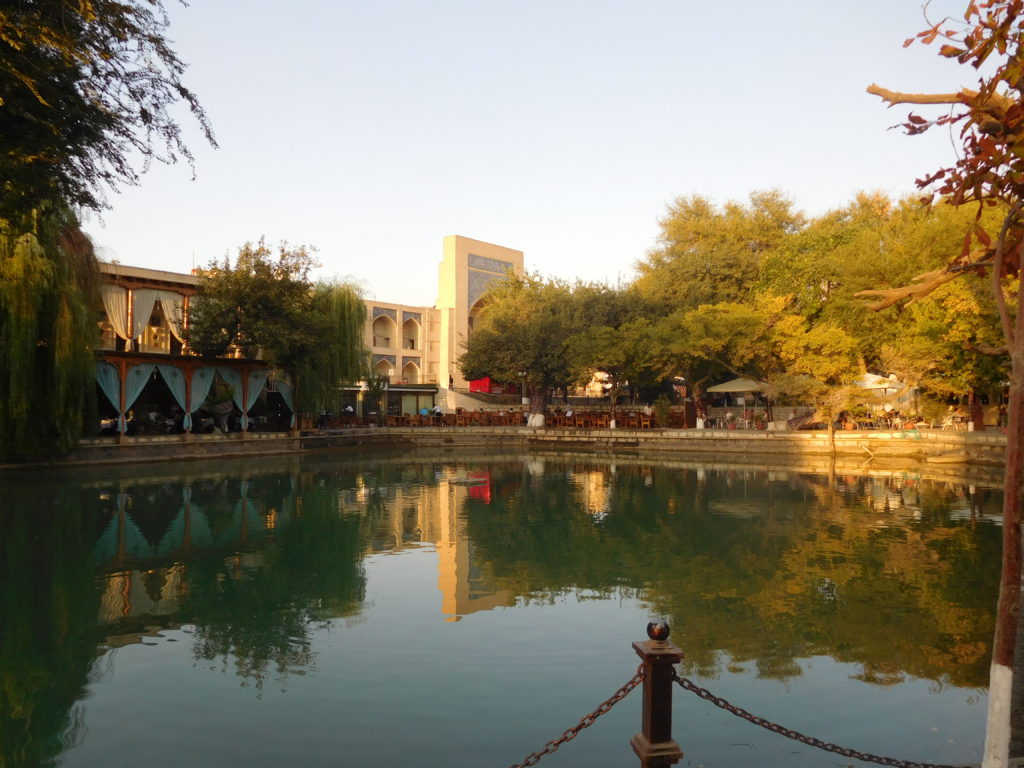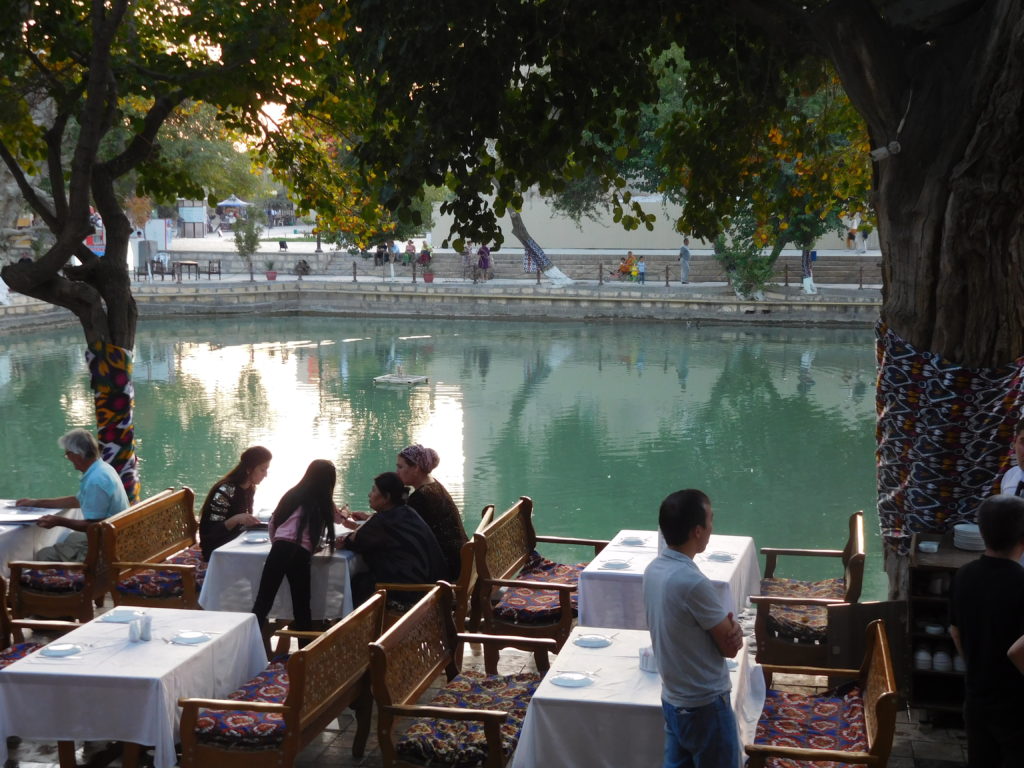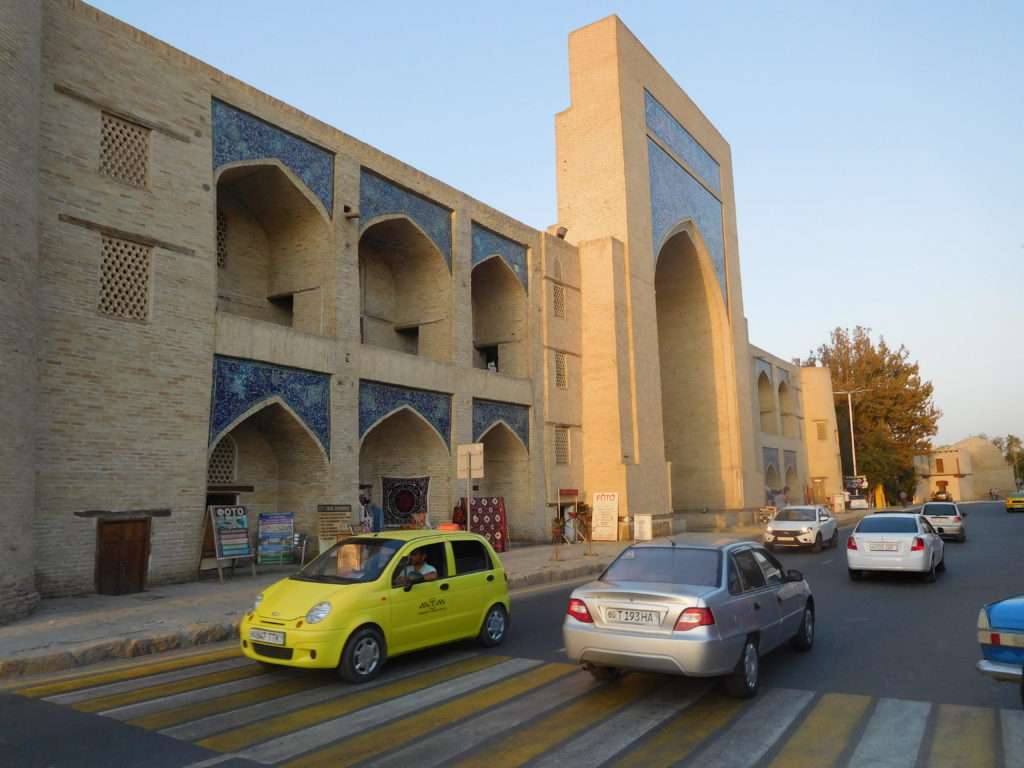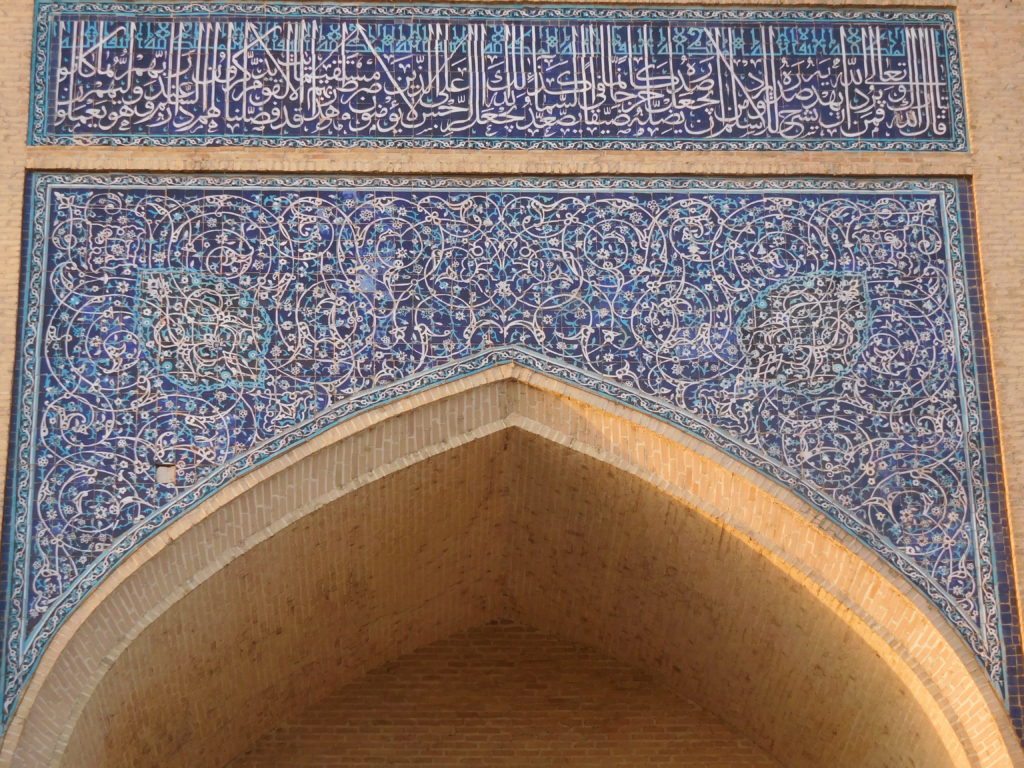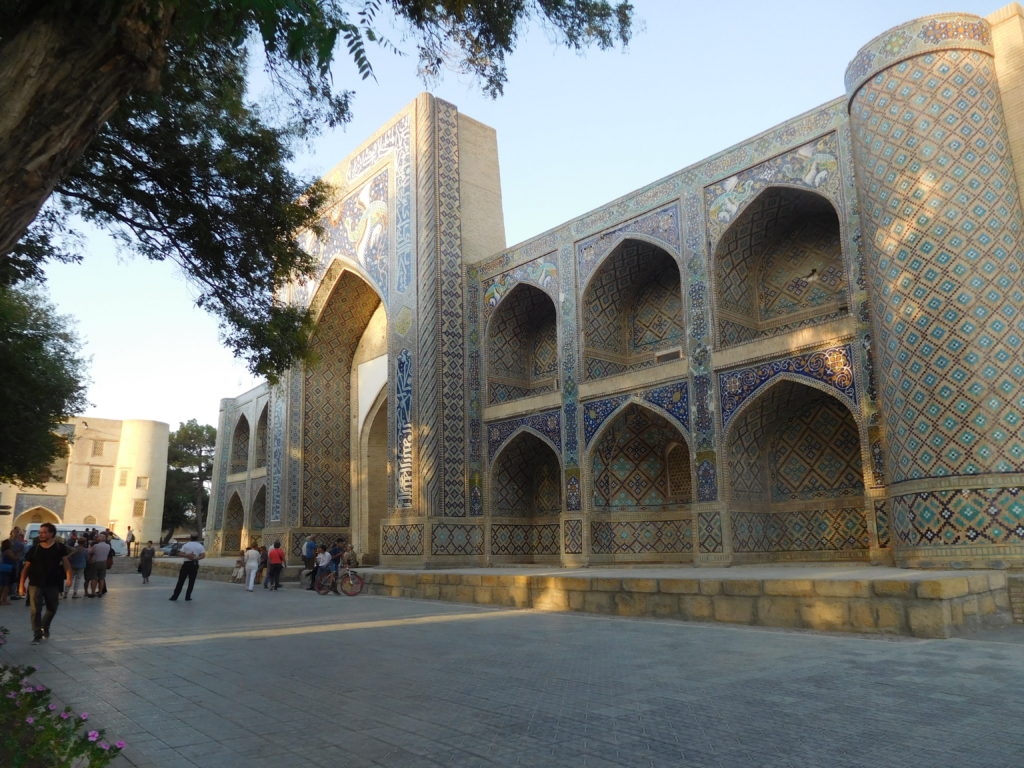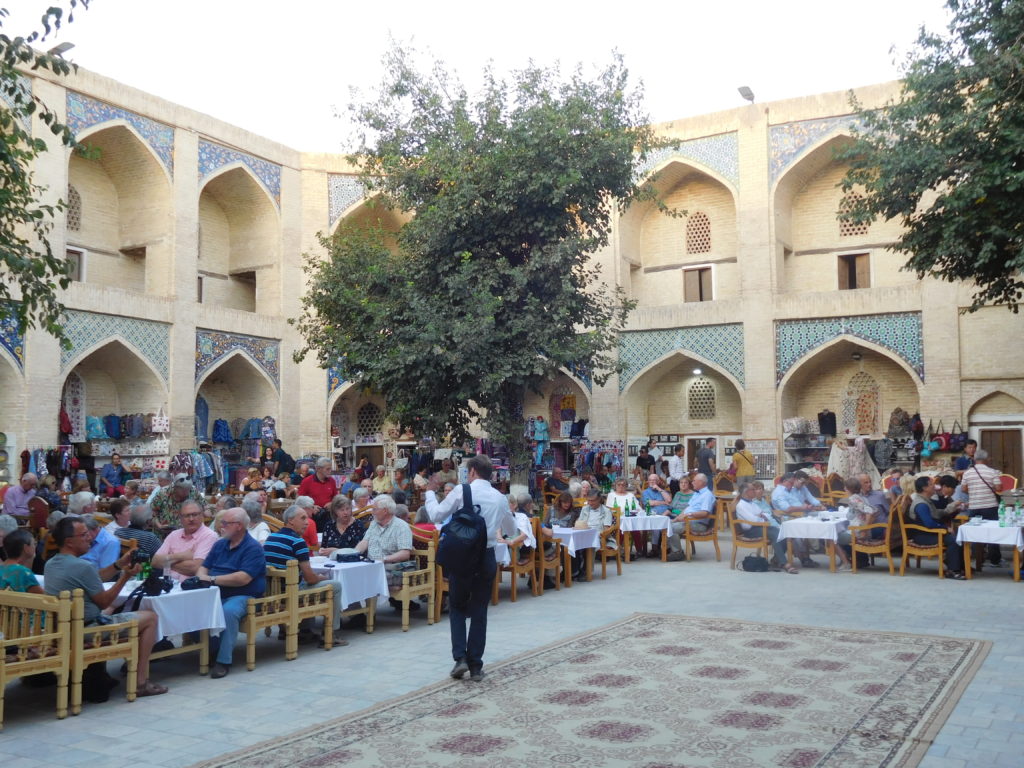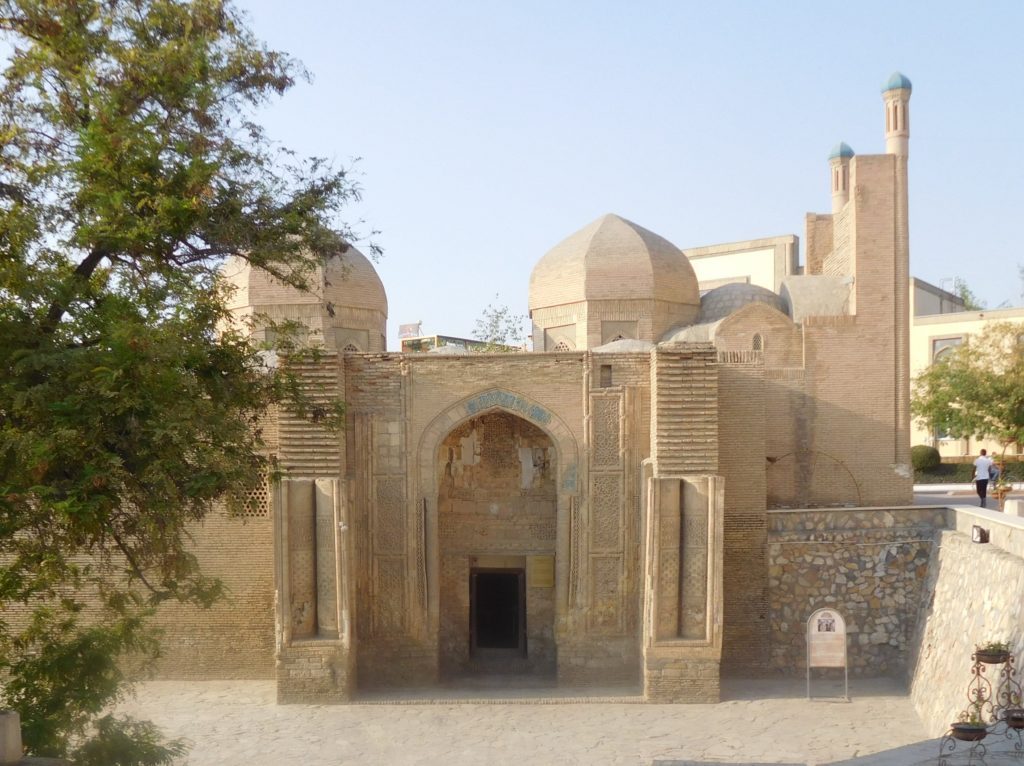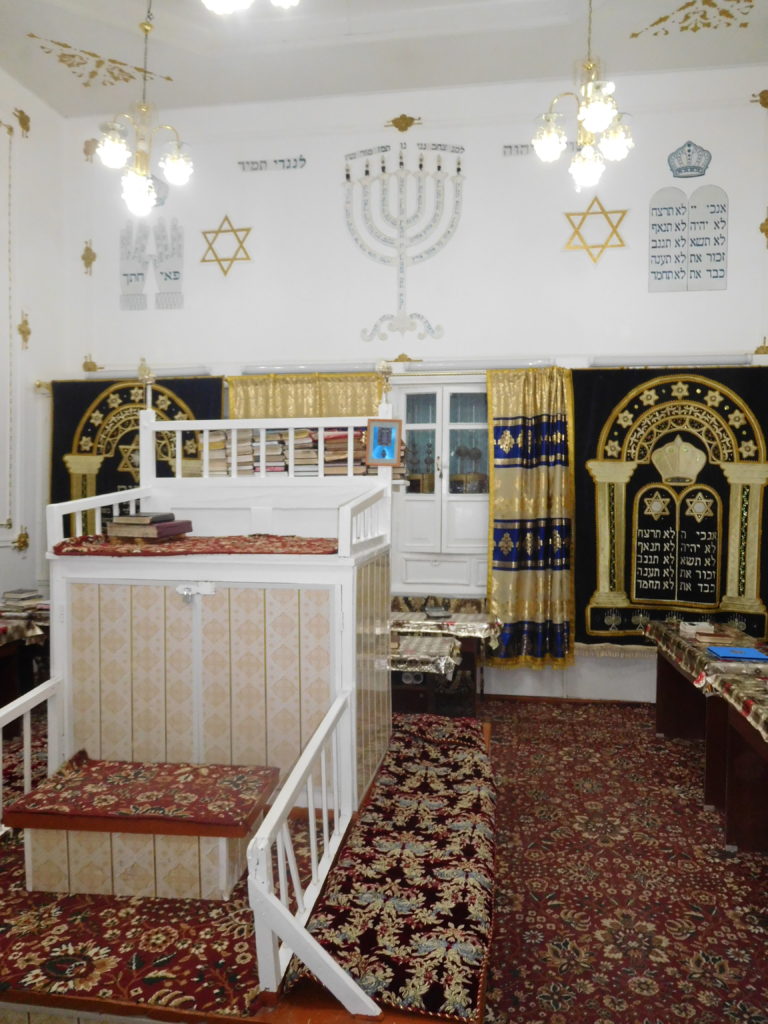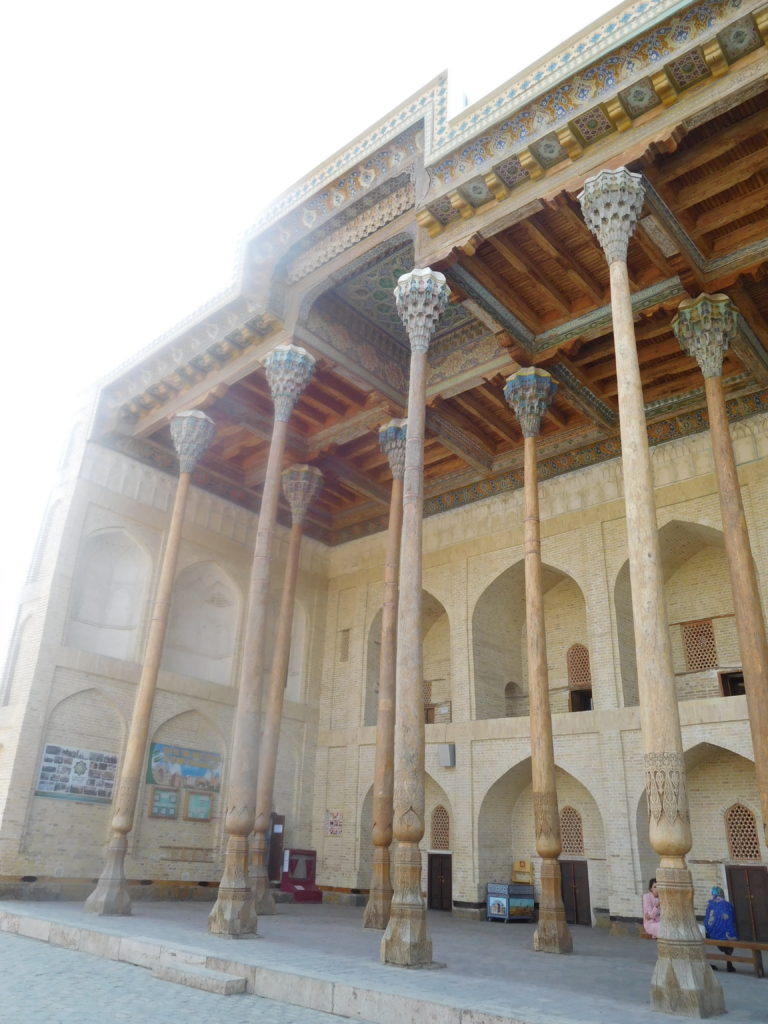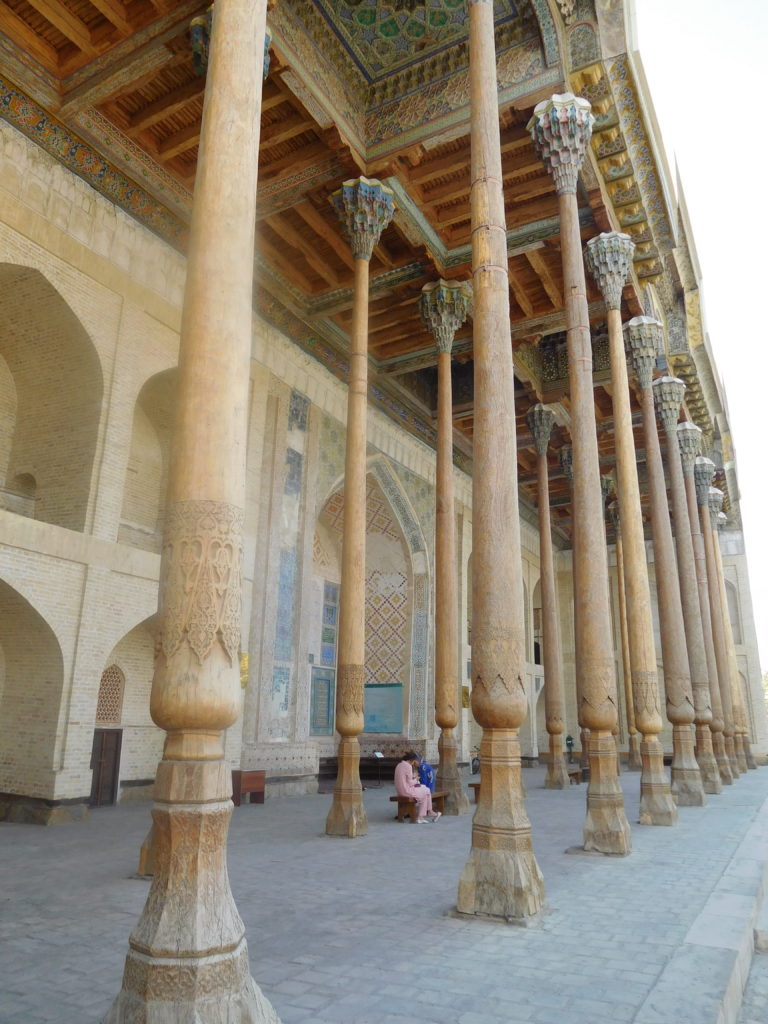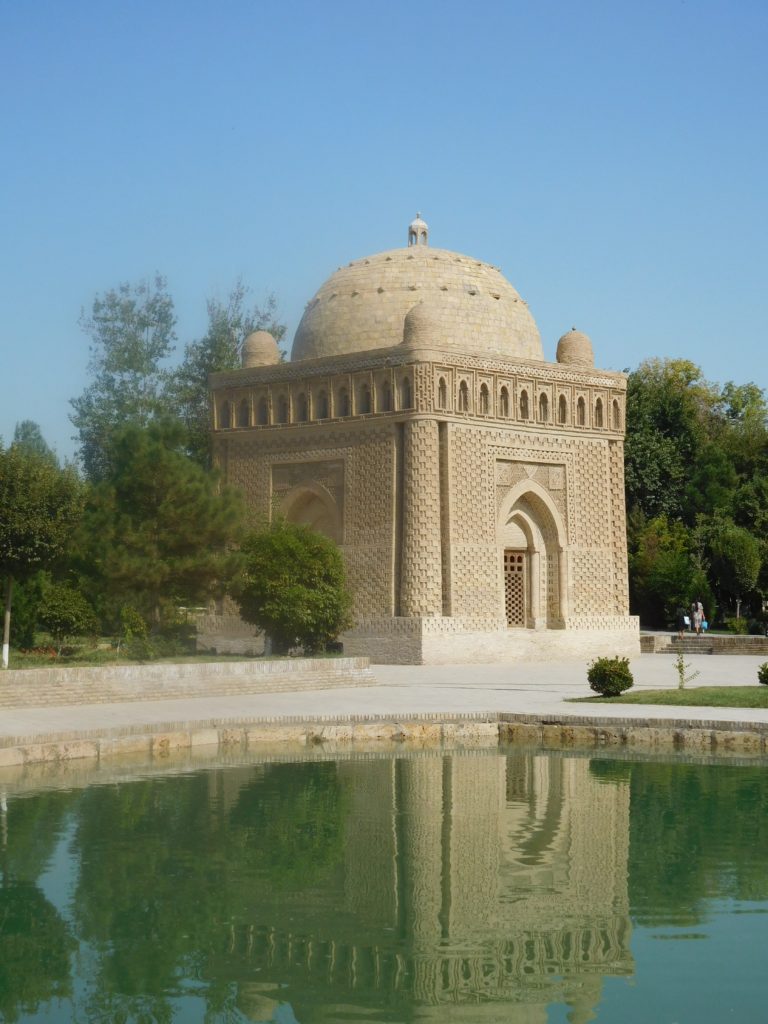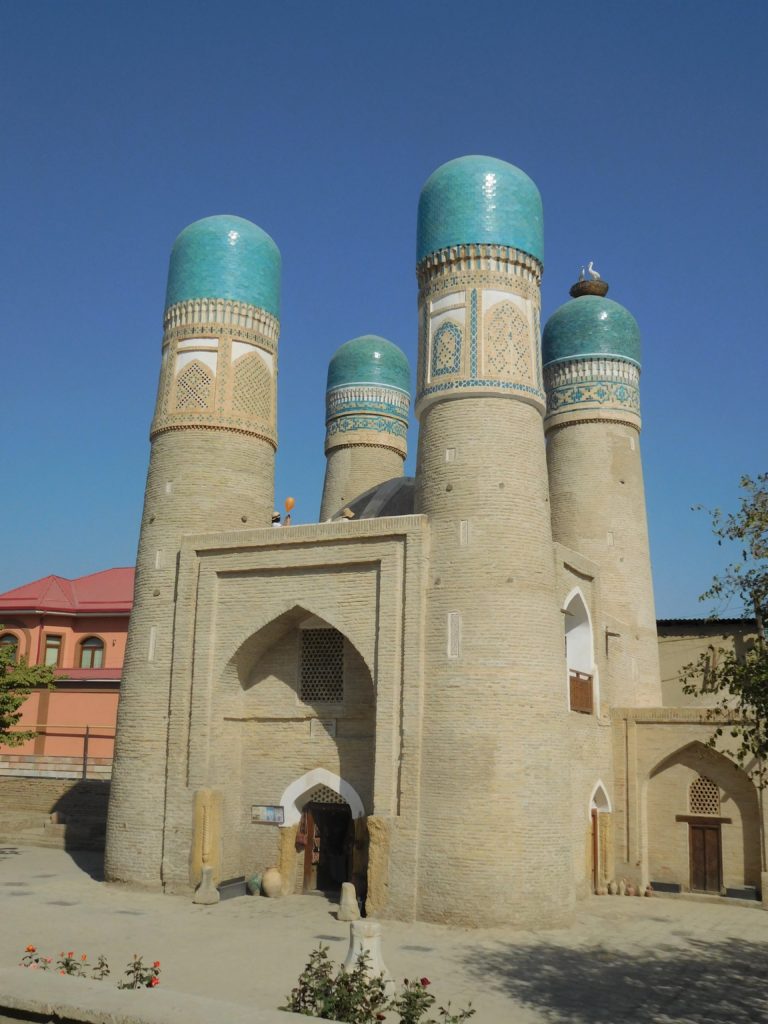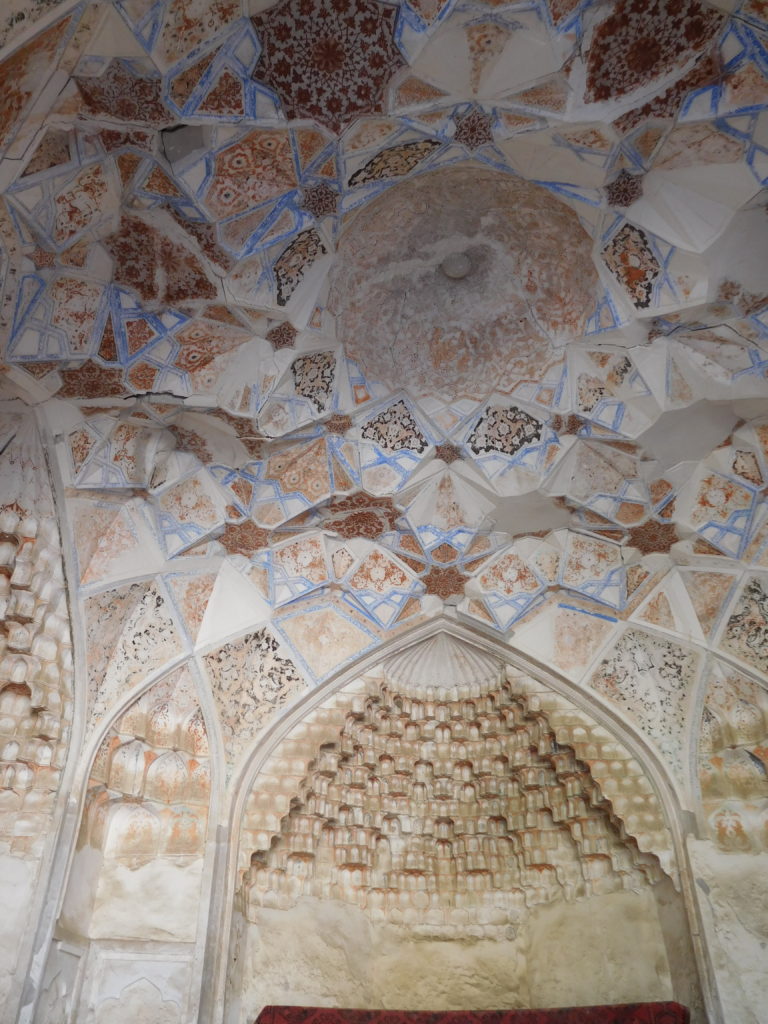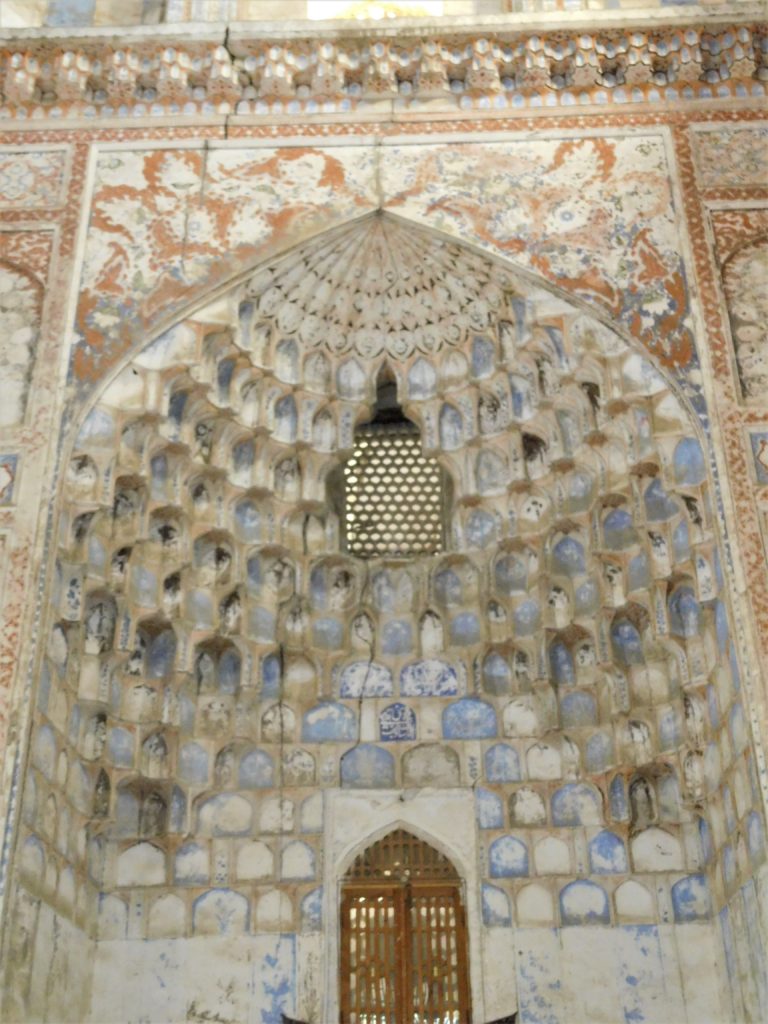Like the history of Samarkand, the history of Bukhara goes back over 2,500 years. The city first bloomed under the Samanid Empire in the 9th and 10th centuries, and again in the 16th century as the capital of the Shaybanids’ state, and most recently as one of the capitals of the Janid dynasty in the 18th century. Only one monument has been preserved from the Samanid period, namely the Samanid mausoleum, while others date back to the times when Bukhara was ruled by the Shaybanids and the Janids.
Undoubtedly, the most important sight of Bukhara is Po-i-Kalan, the religious complex consisting of the Kalan minaret, the Kalan mosque and the Mir-i-Arab Madrasah. The minaret is 47 metres tall; it was erected in 1127 as a part of the Friday Mosque, which was pulled down in 1220 by the army of Genghis Khan. The Kalan Mosque was built much later: in the 16th century. The founder’s ambition was to match the grandiosity of the Bibi-Khanum Mosque in Samarkand. Inside there are 209 columns, holding up a roof that is covered with 288 domes. Opposite the mosque is the Mir-i-Arab Madrasah, erected in the 1530s. Visually dominated by two huge turquoise domes, which can be seen from quite a distance, the madrasah is one of the most beautiful, if not the most beautiful building in Bukhara. The madrasah is still active (interestingly enough, it was also active under communist rule) and therefore the interiors are not open to the public, so you can only peer through the bars into the inner yard.
- Inner yard of the Kalan Mosque and Kalan Minaret/Dziedziniec meczetu i minaret Kalon
- Inner yard of the Kalan Mosque/Dziedziniec meczetu Kalon
- Mir-i-Arab Madrasah/Merdresa Mir-i-Arab
- Kalan Mosque: facade/Meczet Kalon: fasada
- Kalan Mosque: interior/Meczet Kalon: wnętrze
The place I found most charming in Bukhara is a little square between the Ulugh Beg Madrasah dating back to 1417, the Abdulaziz-Khan Madrasah (erected in the first half of the 16th century) and Toqi Zargaron bazaar. I first reached this place by emerging from a maze of dilapidated narrow streets to the east of the square; I was simply blown away by it. I felt as if I had entered a different dimension, as if I had been transported to the world of One Thousand and One Nights. Madrasahs as such are not that all impressive and the courtyard of the Ulugh Beg Madrasah has generally been neglected. However, what made a huge impression on me was the space between the two madrasahs, which according to the tradition are located opposite each other. The third side of the square is closed by the block of Toqi Zargaron bazaar, covered with domes behind which rise the domes of the Mir-i-Arab Madrasah, as well as the slender Kalan minaret. A truly unforgettable view! The Abdulaziz-Khan Madrasah houses the Museum of Wood Carving Art, which is well worth a visit, not because of the exhibits, but for the sake of the richly decorated interiors, especially the former prayer room.
- Ulugh Beg Madrasah and Toqi Zargaron bazaar/Medresa Uług-Bega i bazar Toqi Zargaron
- Ulugh Beg Madrasah/Medresa Uług-Bega
- Abdulaziz-Khan Madrasah/Medresa Abdul Aziza-Chana
- Abdulaziz-Khan Madrasah/Medresa Abdul Aziza-Chana
- Ulugh Beg Madrasah: prayer room/Medresa Uług-Bega: sala modlitewna
- Toqi Zargaron bazaar/Bazar Toqi Zargaron
The lives of the inhabitants of Bukhara revolve around the Lab-i Hauz, an artificial pond surrounded by vegetation and cafes, eagerly frequented by residents and tourists alike. The Lab-i Hauz is the centre of another architectural complex comprising the Kukeldash Madrasah (erected in the 16th century), the Madrasah of Nadir Divan-begi and the Khanaka of Nadir Divan-begi (both from the 17th century). The courtyard of the Kukeldash Madrasah is quite neglected, whereas the courtyard of the Madrasah of Nadir Divan-begi houses (expensive) restaurants. About 200 metres to the west of the Lab-i Hauz is the Magoki Attori Mosque, one of the oldest buildings in the city. This dates from the 9th or 10th century (only the facade has been preserved from this period), but was thoroughly rebuilt in the 16th century. The mosque now houses the Carpet Museum. About 100 metres to the south of the Lab-i Hauz the 17th century synagogue can be found. Located in the centre of the city and still frequented by tourists, it does not have the mysterious atmosphere of the synagogue in Samarkand. Visitors are urged to make a contribution as soon as they step across the threshold.
- Lab-i Hauz. In the background Kukeldash Madrasah/Liab-i-Hauz. W głębi medresa Kukeltasz
- Lab-i Hauz./Liab-i-Hauz
- Kukeldash Madrasah/Medresa Kukeltasz
- Kukeldash Madrasah: details/Medresa Kukeltasz: detal
- Kukeldash Madrasah: inner yard/Medresa Kukeltasz: dziedziniec
- Nadir Divan-begi Madrasah/Medresa Diwan Bega
- Bukhara: Madrasah of Nadir Divan-begi: details/Buchara: Medresa Diwan Bega: detal
- Nadir Divan-begi Madrasah: inner yard/Medresa Diwan Bega: dziedziniec
- Magoki Attori Mosque/Meczet Magok-i-Attari
- One of the twin Kosh Madrasahs/Jedna z bliźniaczych medres Kosz
To the east of the centre and the Po-i-Kalan complex, behind the Arc of Bukhara, is the Bolo Haouz Mosque, built in 1712 with a magnificent wooden portico. Opposite the mosque is Bolo Haouz Chaikhana, a nice restaurant, popular both with residents and tourists, and next to them are the Kosh Madrasahs from 16th century. A few hundred metres to the east of the Bolo Haouz Mosque, a park hides one of the oldest buildings in the city, the tiny Samanid mausoleum from the 10th century, captivating in its austere architecture and subtle decorations. In the opposite direction from the centre, to the east of the Lab-i Hauz, you will come across Chor Minor, a picturesque building, consisting of four minarets, once leading to a madrasah, which has not been preserved.
There are lots of sights in Bukhara, but given the relatively small distances between them, one (full) day will be sufficient to visit them all.
- Synagogue/Synagoga
- Bolo Haouz Mosque/Meczet Bolo-Hauz
- Bolo Haouz Mosque/Meczet Bolo-Hauz
- Bolo Haouz Mosque/Meczet Bolo-Hauz
- Samanid mausoleum/Mauzoleum Samanidów
- Chor Minor/Czor Minor
- Abdulaziz-Khan Madrasah: portal/Medresa Abdul Aziza-Chana: portal
- Ulugh Beg Madrasah: details/Medresa Uług Bega: detal
- Ulugh Beg Madrasah: details/Medresa Uług Bega: detal
- Ulugh Beg Madrasah: details/Medresa Uług Bega: detal


